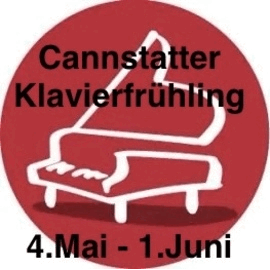Die Sonaten für Violine und Cembalo von Johann Sebastian Bach fristen zwar vielleicht im Vergleich zu den Solosonaten / Partiten für die Violine bzw. den Cellosolosuiten ein schattigeres Dasein in der allgemeinen Wahrnehmung, zeugen aber ebenso von größter Kunst. Hat doch Bach dem Cembalo hier erstmal eine über die reine Begleitung hinausgehende Rolle zugedacht, indem er in der rechten Hand eine Melodiestimme verpackt, so dass sie zu Triosonaten mit der zweiten Oberstimme der Geige und der Continuostimme in der linken Hand des Cembalos werden. Und Triosonaten wurden bekanntlich als höchste Form der Kammermusik der Zeit angesehen. Hier erklingen diese Werke in der modernen Form mit Klavier.
Man könnte bei dieser CD auch an eine Fernsehunterhaltung mit dem Titel ‘Ich trage einen großen Namen’ denken, denn bei Rahel Rilling mag mancher auf ihren Vater Helmuth Rilling reflektieren. Das ist dann aber insofern schief, als Rahel Rilling mit ihrem hochqualifizierten Geigenspiel aus sich selber heraus Bekanntheit hat und das zu Recht. In diesen sechs Sonaten weiß sie ihren Part mit unzweifelhafter Sicherheit zu entwickeln und gleichzeitig mit natürlichem Gespür, wie sollte es in der Familie auch anders sein, die Musiksprache des Komponisten vom ersten Ton an unverkennbar zu formulieren.
Johannes Roloff ist der Aufgabe der melodiösen und begleitenden Teilung seiner Aufgaben ebenso leicht gewachsen. Die Diskussion über Klavier oder Cembalo übergehend kann man sicher sagen, dass die Darstellung auf dem modernen Instrument nichts an struktureller Prägnanz vermissen lässt und auch die thematische Ausgestaltung sicher gestaltend erfolgt. Zusammenfassend bietet diese Aufnahme für dieses Instrumentarium somit eine willkommene Bereicherung, bei der man sich in der Musik sofort geborgen und heimisch fühlt.
The sonatas for violin and harpsichord by Johann Sebastian Bach perhaps have a more shadowy existence in general perception compared to the solo sonatas / partitas for violin or the cello solo suites. However, they also bear witness to the greatest art. Bach has for the first time given the harpsichord a role that goes beyond mere accompaniment by including a melody part in the right hand, so that they become trio sonatas with the second upper part of the violin and the continuo part in the left hand of the harpsichord. And trio sonatas, as is well known, were considered the highest form of chamber music of the time. Here these works are heard in the modern form with piano.
With this CD one could also think of a television entertainment with the title « I bear a great name” (Ich trage einen großen Namen), because with Rahel Rilling some might think of her father Helmuth Rilling. But then this would be skewed insofar as Rahel Rilling’s highly qualified violin playing has made her famous per se, and rightly so. In these six sonatas she knows how to develop her part with undoubted assurance and at the same time to formulate the composer’s musical language unmistakably from the first note with a natural feeling.
Johannes Roloff is also easily up to the task of dividing his melodic and accompanying duties. Passing over the discussion of piano or harpsichord, it is safe to say that the performance on the modern instrument lacks nothing in structural conciseness, and the thematic development is also confidently shaped. In summary, this recording for this instrument thus offers a welcome enrichment in which one immediately feels at home and secure in the music.






















